Typically, fall is the time to cast sinking fly lines and large streamers for aggressive fish. Some fish are preparing to spawn while others, like musky and bass, are looking to store calories before heading into a long winter. By a typical fall, I mean one when water levels are suitable for laying your fly line on the water without the fear of spooking fish. This fall has been abnormally dry in many parts of the country, and my home waters in central Pennsylvania have been no exception, resulting in some of the lowest flows in memory on my local trout, bass, and musky rivers.
Streams that normally have a brisk current have become more similar to stillwaters, where even a light upstream breeze would push a boat back towards the put in. The one benefit to these extreme flows is that my favorite moving waters have become somewhat like aquariums, allowing me to see all the drop offs, structure, sunken habitat, as well the fish I’m pursuing. While it is exciting to see what’s laying on the stream bottom, it’s been frustrating to see trout bolt even when a good presentation is made with a light line and long leader. Laying any line and leader on the water has resulted in countless spooked fish, despite my best efforts to carefully present the fly. So I’ve switched gears to using nothing but a mono rig and jig streamers and have seen better results. Think of this tactic as Euro nymphing with a heavier streamer pattern.
Whether or not you agree with fishing a mono rig, you can’t deny its effectiveness, especially when fishing extremely low flows. Any fly line (floating or sinking) falling onto the water surface creates impact, and even the stealthiest presentation is more than enough disturbance to send fish into hiding. As much as I enjoy casting and fishing a combination of sinking lines and large unweighted streamers, the current conditions are telling me to take up archery until we get water or switch tactics.
The concept is simple, use a long mono rig in combination with a weighted streamer (I prefer jig streamers). You’ll present the fly from a distance and the only item coming in contact with stream bottom is the weighted streamer. The rod tip can be held high to keep the fly higher in the water column or lower to allow the streamer a deeper ride along stream bottom. It’s worth noting that I’ll also use a jig streamer approach for other reasons, including keeping the streamer deeper and slower in the water column, but it is my “go to” approach when I want to fish streamers during extreme low flows. While I’ll vary my mono streamer rig based on species and conditions, I’ll share with you my current mono and favorite jig streamer patterns for trout, although I’ve caught bass, carp, and smaller musky with this same rig during this season. This is not a prescription telling you how to set up your mono rig but a simple example for you to consider when fishing trout streams similar to my home Pennsylvania waters.
RODS
Any traditional action 9’ to 10’ 4-6 weight will do. While I’ve used euro style rods with jig streamers, my preference is for shorter and stouter rods capable of casting heavier streamers, along with a stiff tip capable of making better hook sets. Longer and limper rod tips lack the power to consistently make good hook sets with heavier, wire streamer hooks given the amount the tip bends when lifting the rod tip to set the hook.

RIG
Mono
For the mono line, I’ll use 35-40’ of 8 lb Maxima HV (High Visibility). The reason for using 40’ is that it provides the ability to make longer casts. I prefer using Maxima given its excellent knot strength, abrasion resistance, and little stretch. When fishing thicker wire streamer hooks, I want to put as much energy into the hook as possible and I feel Maxima’s low stretch provides better hook penetration compared to other, more stretchy monofilament materials. Plus, I like the visibility of the Maxima HV compared to the Maxima Chameleon. The reason for using thinner, 8 lb mono (compared to using 15 or 20 lb) is that casting lighter- to medium-weight jig streamers is easier with thinner line. Remember, with this approach, the weight of the lure pulls the line, so the less mass the fly has to carry during the cast, the longer and more efficient casting will be.
Tippet
My preference is for 4-8’ of 4X tippet. 4X is more than enough strength for the size of trout I catch, along with the smaller, lighter jig streamers I prefer presenting in low water. If fishing heavy flies for monster trout, then you’ll want to use heavier mono and tippet.
Sighter
An 8lb sighter section can be added between the Maxima HV and the tippet, or use a Scientific Anglers Indicator Marker on the mono or tippet. The sighter is used more for a depth gauge than strike indicator, as you’ll feel the strikes when fishing jig streamers. Knowing the distance from the sighter to your fly, along with the height and the angle the sighter is to the surface will tell you how deep your pattern is during the presentation. This is particularly helpful when fishing deeper water.

FLIES
I keep my jig patterns simple. I use multiple size, color, and weight variations of both the Sculp Snack and Kreelex Jig. The Sculp Snack is my variation of the wooly bugger. The UV olive variation is excellent for imitating sculpins, a favorite food source for larger trout. Black, white, and rusty orange are colors to consider, but I would say I use the olive version 90 percent of the time. The Kreelex jig is a slight variation of Chuck Kraft’s famous Kreelex streamer. This pattern looks like Christmas tinsel tied onto a hook and looks like a flash bulb going off under water during the presentation. Some would only advise using such a gaudy pattern during high and off-color water, but I’ve found it to work extremely well in all fishing scenarios. I normally use shorter, 2-3” jig streamers for lower flows, tie them on a size 8 or 10 jig hook, and vary the tungsten bead size from a 3.0-5.6. Bead size is dependent on current speed and water depth.
FINAL WORD
While I enjoy casting and retrieving larger articulated streamers with sink tips and sinking lines, the low flow conditions we’re experiencing are telling me to switch to a mono rig with jig streamers. If you want to fish streamers this fall and are also faced with low flows, you may want to give it a try.




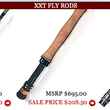
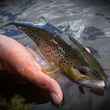










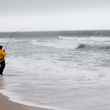




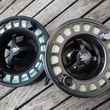
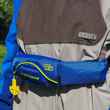






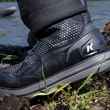
Comments
Jon pershke replied on Permalink
Are you mainly dead drifting, swinging, or stripping?
Bill Burden replied on Permalink
Ummm, you’re pretty much describing Tenkara (fixed-line) techniques. Keiryu or Honryu-style rods manage weighted streamers (and euro nymphs) with panache. Might want to give that a shot.
Michael Millar replied on Permalink
It's not fly fishing by any stretch of the imagination... jigs... NOT, - mono... NOT...
don't even pretend it is... it's heresy... it's sacrilege... call it by another name but not fly fishing... m
Pages